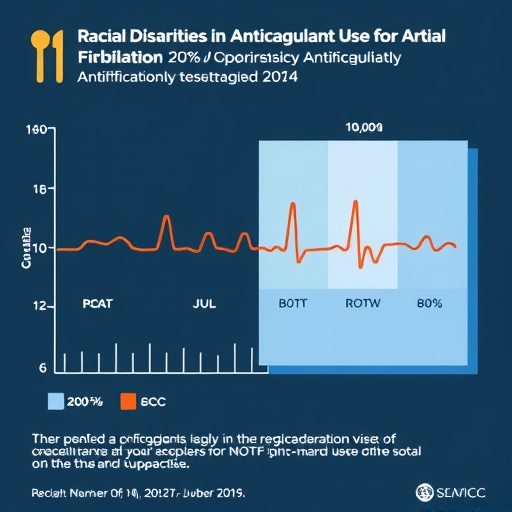
Credit: Kessler Foundation
East Hanover, NJ – March 9, 2018. The major economic indicators held more good news for Americans with disabilities, according to today's National Trends in Disability Employment – Monthly Update (nTIDE), issued by Kessler Foundation and the University of New Hampshire's Institute on Disability (UNH-IOD). Gains for job seekers with disabilities moved higher for the 23rd consecutive month. Several factors may be contributing to ongoing job growth. By addressing policies that hinder employment opportunities, state-level initiatives are making progress toward greater inclusion of people with disabilities in the workforce.
In the Bureau of Labor Statistics (BLS) Jobs Report released Friday, March 9, the employment-to-population ratio for working-age people with disabilities increased from 28.1 percent in February 2017 to 30.5 percent in February 2018 (up 8.5 percent; 2.4 percentage points). For working-age people without disabilities, the employment-to-population ratio also increased from 72.8 percent in February 2017 to 73.5 percent in February 2018 (up 1 percent; 0.7 percentage points). The employment-to-population ratio, a key indicator, reflects the percentage of people who are working relative to the total population (the number of people working divided by the number of people in the total population multiplied by 100).
"Job growth among people with disabilities continues with another monthly increase in the employment-to-population ratio," according to John O'Neill, PhD, director of employment and disability research at Kessler Foundation. "Despite the past 23 months of positive change, much work needs to be done before people with disabilities achieve employment parity with their nondisabled peers."
The labor force participation rate for working-age people with disabilities increased from 31.5 percent in February 2017 to 33.6 percent in February 2018 (up 6.7 percent; 2.1 percentage points). For working-age people without disabilities, the labor force participation rate also increased from 76.4 percent in February 2017 to 76.8 percent in February 2018 (up 0.5 percent; 0.4 percentage points). The labor force participation rate is the percentage of the population that is working or actively looking for work.
"The gains seen by people with disabilities this month, and over the last 23 months, have far exceeded gains seen by people without disabilities. This suggests that as we approach full employment, employers may be tapping groups that were previously overlooked," said Andrew Houtenville, PhD, associate professor of economics at UNH and research director of the Institute on Disability.
Efforts on the state level are promoting legislative reforms that prioritize the incorporation of disability in workforce development programs. Partnerships such as the State Exchange on Employment & Disability (SEED) are providing state legislators with the resources they need to develop effective policies for ensuring ongoing progress toward inclusive workforces. Major universities are contributing to state-level efforts through collaborations such as the Midwest Disability Employment Consortium, which aims to improve employment outcomes for people with disabilities in the Midwest.
The Consortium includes the University Centers for Excellence in Developmental Disabilities (UCEDD) in Iowa, Nebraska and South Dakota. "Our collective goal is to improve employment outcomes for people with disabilities in the Midwest," said Julie Christensen, LMSW, PhD, director of the Iowa UCEDD. "We are thrilled to partner with Kessler Foundation on this important project – Just in Time Employment Supports – which is based on a unique multi-state approach to finding innovative solutions for expanding access to long-term employment services and supports for people with disabilities."
"The Consortium will apply readily available virtual technology platforms in its plans to address the employment needs of people with disabilities in these three states," explained Elaine E. Katz, MS, CCC-SLP, senior vice president of grants and communications at Kessler Foundation. "We anticipate that this approach will yield large-scale outcomes that will benefit businesses as well as jobseekers," Katz remarked. The Consortium will also serve as a disability employment 'think tank', and a hub for the collection of valuable data on the best practices for competitive, sustainable employment opportunities in these mid-western states.
In February 2018, among workers ages 16-64, the 4,623,000 workers with disabilities represented 3.2 percent of the total 145,020,000 workers in the U.S.
###
The next nTIDE will be issued on Friday, April 6, 2018. Every nTIDE Jobs Report release is followed by a noon Lunch & Learn live webinar, hosted via Zoom Webinar. This webinar series features in-depth analyses, news from the field, and invited panelists. Join live, or access our archives at: http://www.ResearchonDisability.org/nTIDE.
NOTE: The statistics in the nTIDE are based on Bureau of Labor Statistics numbers, but are not identical. They are customized by UNH to combine the statistics for men and women of working age (16 to 64). NTIDE is funded, in part, by grants from the National Institute on Disability, Independent Living and Rehabilitation Research (NIDILRR) (9ORT5022 and 90RT5017) and Kessler Foundation.
About Kessler Foundation
Kessler Foundation, a major nonprofit organization in the field of disability, is a global leader in rehabilitation research that seeks to improve cognition, mobility, and long-term outcomes — including employment — for people with neurological disabilities caused by diseases and injuries of the brain and spinal cord. Kessler Foundation leads the nation in funding innovative programs that expand opportunities for employment for people with disabilities. For more information, visit http://www.KesslerFoundation.org.
About the Institute on Disability at the University of New Hampshire
The Institute on Disability (IOD) at the University of New Hampshire (UNH) was established in 1987 to provide a coherent university-based focus for the improvement of knowledge, policies, and practices related to the lives of persons with disabilities and their families. For information on the NIDILRR-funded Employment Policy and Measurement Rehabilitation Research and Training Center, visit http://www.ResearchonDisability.org.
For more information, or to interview an expert, contact:
Carolann Murphy
973-324-8382
[email protected].
Media Contact
Carolann Murphy
[email protected]
973-324-8382
@KesslerFdn
http://www.KesslerFoundation.org





